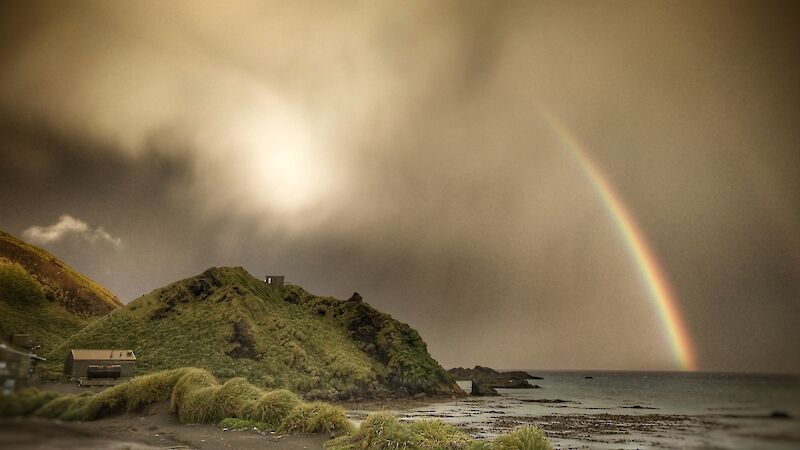Many expeditioners at Macquarie Island travel into the field for work or recreation. Most travel is by foot, or sometimes by inflatable rubber boat (IRB). Vehicles can only be used on the isthmus.
Field huts are strategically located around the island. They are accessed by a network of walking tracks.
Field huts provide valuable accommodation for expeditioners working in the field. Over the years, the huts have supported a range of scientific programs. They are also popular retreats for anyone wishing to get ‘off station’ for a few days.
Each year during the station resupply, helicopters fly essential equipment and supplies to the huts, including food and LP gas. This means that expeditioners only need to carry personal safety and work equipment when they walk. A lighter load reduces the chance of injury from negotiating steep slopes with heavy packs. All rubbish generated at the huts or in the field is removed during resupply and returned to the station.
Each hut is equipped with a gas stoves and heater for cooking and warmth. Water supply for the huts is either rainwater collected from the hut roofs or from nearby soaks. Water must be treated before drinking.
A RAPS unit (remote area power supply) provides power for each hut. The unit consists of a wind generators and solar panels that charge 12 volt batteries. This provides power for lights and radios. A small petrol generator provides back up 240 volts of power if needed. Each hut has a car radio CD player, that recieves Australian and New Zealand AM radio stations.
Communications between huts and groups in the field is typically by VHF radio. The island is serviced by four radio repeaters. The repeaters enable communications over the rugged landscape. Each person or group also carries a SPOT satellite-tracking device for safety. Nightly radio scheds take place between the field parties and the station. The scheds take place at set times daily, giving expeditioners up to date weather forecasts and station news. Each person carries a personal first aid kit. Larger medical kits are located at some huts.
Access around the island is generally restricted to the track network. Access off track is limited to essential maintenance and approved scientific research. Off-track travel requires the use of a map, compass and GPS.
Macquarie Island has 3 types of Special Management Areas. These areas provide protection for sensitive wildlife breeding. Access to these areas is subject to seasonal closures. Appropriate permits from the Tasmanian Parks and Wildlife Service are required.

